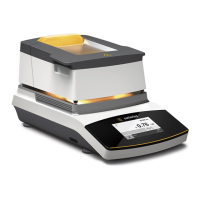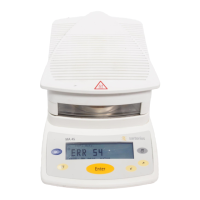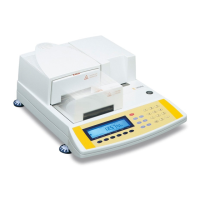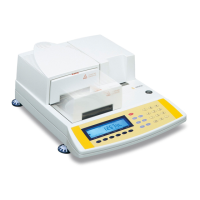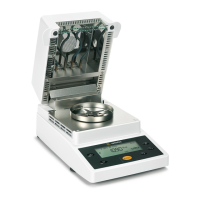29
Applying a Sample to the Sample Pan
● Apply the sample to the sample pan in a thin, even layer (height: 2 to 5 mm, weight:
5 to 15 g); otherwise:
– a sample applied unevenly will result in a nonuniform distribution of heat
– a sample will not be dried completely
– the analysis time will be unnecessarily extended
– the sample burns or a crust/ skin forms on its surface as a result of a very thick layer
– the crust makes it difficult or impossible for moisture to escape from the sample
during the drying process
– uncertain and unknown quantity of moisture remains in the sample
● Apply liquid samples, pasty samples or samples that can melt to a glass fiber filter
(order no. 6906940); you will obtain the following advantages:
– uniform distribution due to the capillary effect
– prevents liquids from beading together and forming drops
– with larger surfaces, the moisture can evaporate faster
– considerably more convenient than the “sea-sand method”
When drying samples containing sugar, a crust or skin can form and seal the surface.
A glass fiber filter is especially helpful in such cases. The moisture can evaporate
downwards through the surface of the filter. You can avoid or limit the crust/skin
formation if you place the glass fiber filter on top of the sample.
● Cover solid, heat-sensitive samples with a glass fiber filter (order no. 6906940);
you will obtain the following advantages:
– gentle heating, because the sample surface is shielded from excessive heat
– higher temperature setting can be selected
– uniformity of the sample surface
– fast evaporation of the moisture
– excellent reproducibility for samples containing fat
Avoiding the Formation of Crust/Skin
You can add “solvents” to the sample to prevent the formation of crust/skin during the
analysis runs. The weight of a solvent you apply to the sample will not influence the final
result of an analysis.
● Once you have closed the sample chamber, open it again within 2 seconds after you
hear a beep tone.
● Apply a solvent to the sample
● Close the sample chamber and start the analysis run as usual
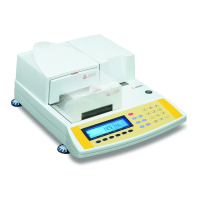
